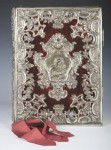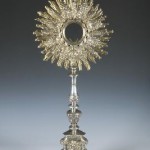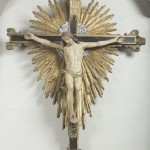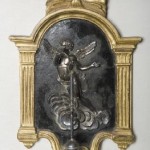The museum, which can be entered directly from the church, is found in a series of three small elegant halls, characterized by the passage doors with beautiful 16Th century jambs in gray sandstone that bear the date “15..”.
Vigorously supported by the provost, Father Renzo Mazzoni (1977-1984), a man also of great culture, the museum was inaugurated in 1983. It can be considered the first of its kind in the Florentine Upper Valdarno, in reality a forerunner since, at that time, the idea of concentrating and promoting artistic assets locally, i.e., the idea behind the various “little big museums” had not yet totally matured and would be systematically carried out much later.
The structure was updated both technological and from an exhibition point of view for the 2007 show “Renaissance in the Valdarno”, with the assistance of the Ente Cassa di Risparmio and the parish, overseen by Monsignor Manlio Tinti since 1984.
The museum contains valuable silver works and liturgical furnishings belonging to the collegiate church, with some important donations from the antique dealer Giovanni Pratesi. Beautiful sacred vestments and hangings from the church’s rich endowment, antiphonaries with treasured 16th-century illuminations, and a complete and rare series of processional insignia with symbols of the Passion in carved and painted wood are displayed on a rotating basis. One of the paintings to be pointed out is Ludovico Cigoli’s (1559-1613) Martyrdom of Saint Lawrence, from 1590. Created for the church of the Company of San Lorenzo of the Ospedale Serristori in Figline, it was acquired by the Medicis in 1733 and later became part of the Florentine museum patrimony. Indeed, it is a loan from the Florence Superintendency.














